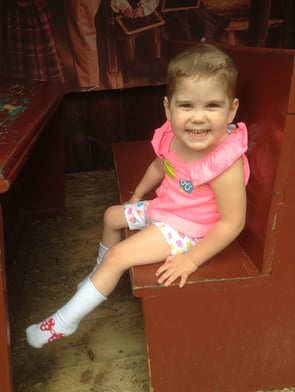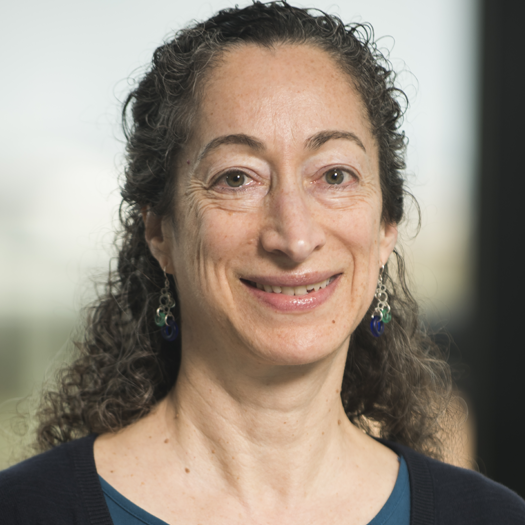
Emily's Story

In 2012, Emily Rose Wagner was born in Boston, and her parents, Corey and Sunshine Wagner, were beyond thrilled to have their second child. The first few months after Emily was born were a dream come true for the entire family.
The first sign of trouble presented itself when Sunshine had to stop breastfeeding Emily because the baby wasn’t getting enough nutrition. Over the next few months, Emily became more and more fussy, and at 6 months, her family noticed she developed a head bob tremor, and her spine didn’t look right. When Emily was 10 months old, her parents took her to the emergency department because she appeared to be in extreme abdominal pain. After looking into it further, Sunshine found out that Emily was born missing half of her lumbar and most of her tail bone. This began the months-long journey to finding Emily’s diagnosis.
 During this time, the family received at least three possible diagnoses, Emily was seeing more than 14 specialists, and she continued to regress. Emily could not sit up on her own and was hospitalized every few weeks. In the fall of 2013, Emily got her diagnosis MRI (magnetic resonance imaging). When the nurse practitioner read the report to Sunshine, she heard the term “white matter disease,” and froze. Sunshine has a medical background and knew this was serious. “I heard my daughter’s death sentence, and I could not be consoled the entire weekend,” Sunshine said. She knew this was a progressive disease with no cure and few treatment options.
During this time, the family received at least three possible diagnoses, Emily was seeing more than 14 specialists, and she continued to regress. Emily could not sit up on her own and was hospitalized every few weeks. In the fall of 2013, Emily got her diagnosis MRI (magnetic resonance imaging). When the nurse practitioner read the report to Sunshine, she heard the term “white matter disease,” and froze. Sunshine has a medical background and knew this was serious. “I heard my daughter’s death sentence, and I could not be consoled the entire weekend,” Sunshine said. She knew this was a progressive disease with no cure and few treatment options.
Emily continued to deteriorate rapidly, and doctors predicted she wouldn’t make it to see her second birthday. In February of 2014, Emily was in the hospital again, known as the girl with the mystery diagnosis. Lance Rodan, a fellow in genetics, visited Emily while she was there and made it his personal mission to figure out her diagnosis. He found a research paper that had recently been published on HSBL (a sub-type of leukodystrophy) and helped connect the family to Ryan Taft, Ph.D., from The University of Queensland, and Adeline Vanderver, M.D., from Children’s National Health System, who helped officially diagnose Emily. Sunshine will never forget the phone call that started out, "I think I know what is wrong with your daughter."
Leukodystrophy is a genetic condition that affects the central nervous system by disrupting the growth of white matter in the brain. There is currently no cure for leukodystrophy, but the Leukodystrophy and Myelin Disorders Program at Children’s National Health System, led by Dr. Vanderver, provides patients like Emily comprehensive clinical care, diagnostic testing, and the most advanced treatment options available to aid in developmental progression.
Dr. Vanderver works closely with Emily’s care team in Boston on her treatment plan. As a result of the treatments, Emily is finally making great progress. She is no longer in pain around the clock and has turned into a happy, joyful little girl. Now, at 3 years old, she is cognitively above average, has the vocabulary of a 5-year-old, and took her first steps just a few weeks ago.




